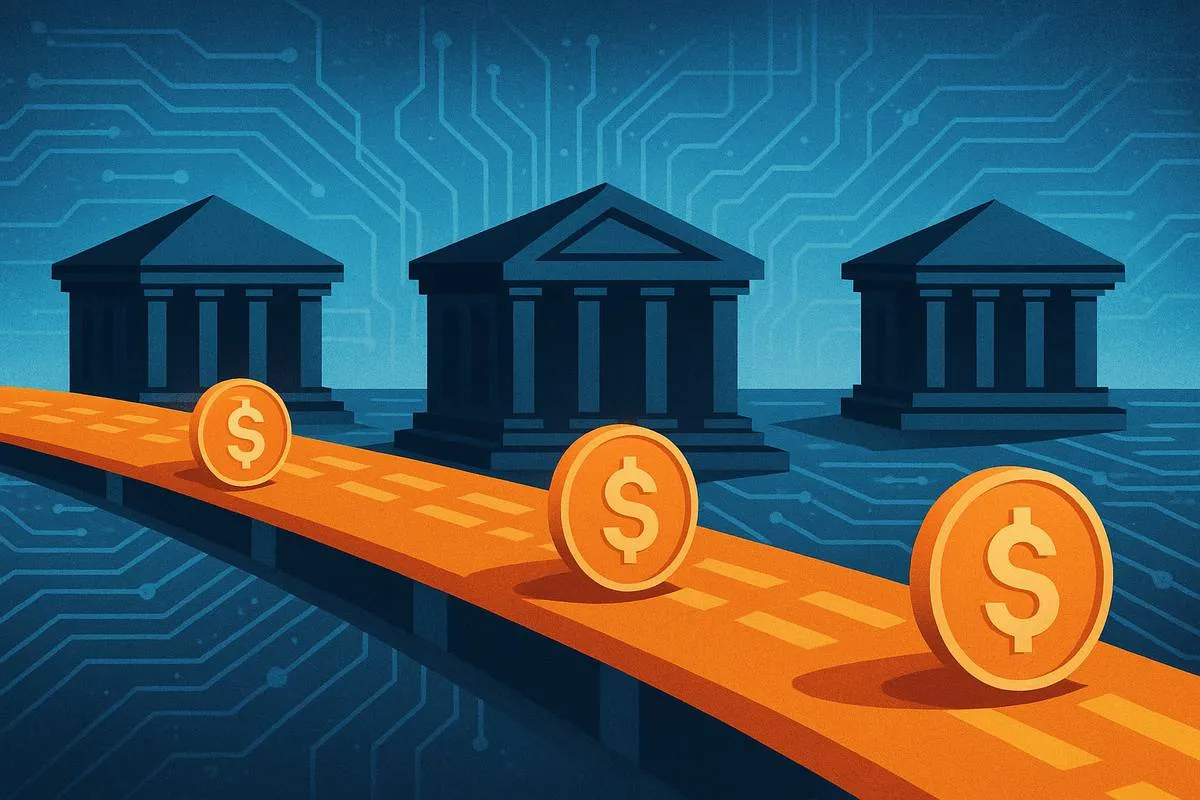Banks Will Not Issue Stablecoins They Will Control the Rails Instead

The idea of banks issuing their own stablecoins makes for good headlines. The reality is far less likely.
The Hurdles
Major barriers block banks from becoming issuers:
- Patents: Custodia’s 2022 patent (U.S. 11392906) on bank-issued tokens
- Regulatory caps: Limits on interest payments tied to deposits
- Compliance costs: Heavy oversight for digital asset issuance
Taken together, the economics and risk profile make direct issuance unattractive. But banks have a smarter angle.
The Economics of Custody and Revenue Sharing
Stablecoin issuers cannot pay yield. Banks providing custody and settlement services can structure revenue-sharing agreements that achieve similar outcomes without breaching regulations.
This is why JPMorgan, BNY Mellon, and Citi are moving quickly. Custody fees are only the entry point. The real play is capturing stablecoin economics without ever being classified as issuers.
The Settlement Problem
Circle spreads reserves across multiple banks for safety. Those banks then face a new challenge: 24/7 interbank settlement.
Traditional rails shut down on weekends. Crypto does not.
The banks that build tokenized settlement networks between themselves will capture fees on every mint, burn, and transfer. They gain continuous settlement economics while avoiding the regulatory burdens of issuance.
Technical Patterns in the Bank Playbook
The emerging architecture has clear traits:
- Separation of roles: Issuers focus on tokens, banks on custody and settlement
- Infrastructure monetization: Fee structures tied to flows rather than float yield
- Tokenized deposits: Interbank settlement networks that run 24/7 with deterministic finality
- Compliance insulation: Banks capture economics without taking on the regulatory front-end risk
The strategy is not to be Circle. It is to power Circle.
What to Watch
The signal will be the first tokenized deposit settlement partnership between major banks. When that happens, banks will have officially secured the stablecoin backend. And they will have done it without issuing a single coin.
What role do you think banks will play in the stablecoin ecosystem in the coming years?